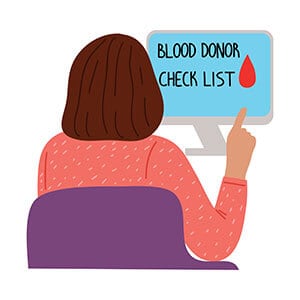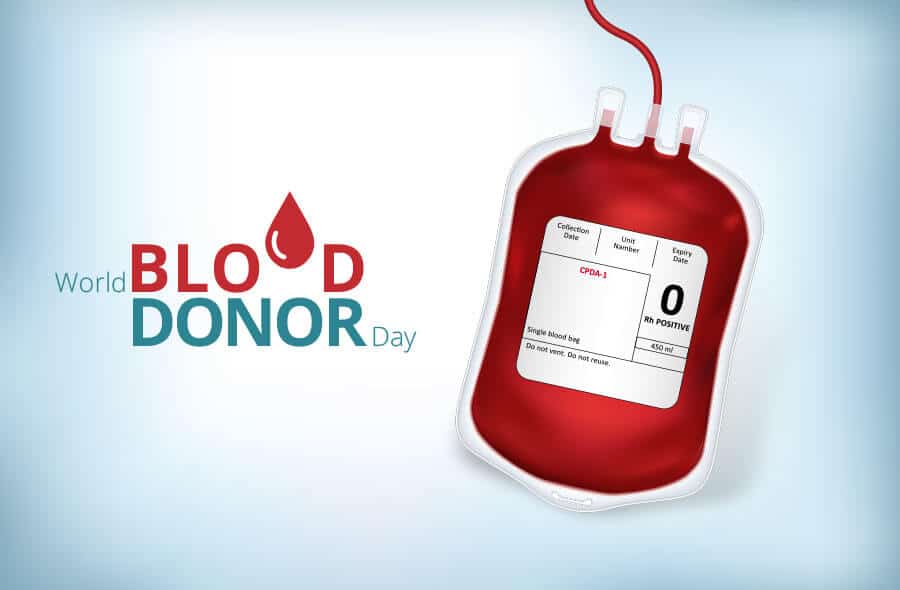Inspired by World Blood Donor Day, celebrated annually on June 14, through this piece we will look into how technology and digitalization are changing/optimizing the process of donating blood. We will briefly discuss the background of this day, and the benefits of donating blood, too.
World Blood Donor Day in itself commemorates the birth anniversary of Karl Landsteiner, the Austrian physician, and biologist who separated blood groups for the first time in human history.
He distinguished the main blood groups in 1900. For his historic discovery, he is well recognized as the father of transfusion medicine.
More about artificial blood research here.

The World Health Assembly has designated Blood Donor Day to honor and thank generous blood donors, while also encouraging more people to give blood. Observed since 2005, this day aims to raise awareness on the need for regular blood donations so as to ensure that all human beings and communities enjoy affordable supplies of safe blood and blood products.
Blood is vital for helping people in life-threating situations and improving general health conditions. It is crucial for a proper treatment of traumatic injuries, serious chronic illnesses, anemia, cancer and surgeries, and other medical and surgical life-saving procedures.
Even though blood donation is primarily and ideally perceived as a completely voluntary gesture, some countries use incentives, such as monetary compensation or a right to paid time off from work, in order to stimulate people to donate blood regularly.
Who’s Eligible to Donate Blood and Its Benefits
Every person above 18 years old and below 60 and who is not suffering from any transmissible disease is eligible to donate blood.
The body temperature should be normal, pulse should be regular also, between 50-100 beats.
Suffering from diseases like kidney failure, liver illness, and hypertension, or suffering from HIV and diabetes prevents one from donating blood.
A regular blood donor who has gone through the blood donating process should wait for three months before donating again, whereas women who have suffered a miscarriage should not donate blood for six months after the day the miscarriage happened.

A criterion that is not necessarily commonly known is that an individual who has had a dental intervention is not fit to donate blood for at least a month.
Another criterion you might already have heard of is that alcohol in the blood makes you ineligible for donating blood.
While talking about the crucial importance of blood donating, we should keep in mind that those in (desperate) need for blood are not the only ones who benefit from blood donation.
In addition to the recipients’ benefiting, those who donate blood also enjoy several psychological and emotional health benefits after going through this procedure.
According to the American Red Cross, one single donation can save as many as three lives.
Listed above are some key benefits from blood donation:
- reduces toxic iron from the body,
- maintains healthy liver and heart,
- stimulates blood cell production,
- lowers the risk of cancer,
- reduces stress (a blood donor may feel more valuable and with a higher sense of belonging),
- reduces the risk of damage to the pancreas, and
- may reduce obesity
Safe Blood Saves Lives
To praise blood donors, the WHO has different themes each year. This year’s campaign theme is “Safe blood saves lives” with the slogan “Give blood and make the world a healthier place”.
Through this campaign, WHO calls on people all over the world to become life-savers by volunteering to donate blood regularly.
The key concept is to highlight the contribution an individual donor can make to improve health for others in the community as a whole.
Universal Need, Limited Access
As you are reading this article, someone, somewhere in the world is in need of blood.
However, despite the global human need for safe blood, access to it is still considered a privilege in some countries.
Data from the World Health Organization (WHO) show a clear discrepancy between countries, depending on the country’s national wealth and incomes.
According to it, 40% of blood is collected in high-income countries, which are home to only 16% of the world’s population.
More specifically, recent WHO data (June 2020) show that the median blood donation rate in high-income countries is 31.5 donations per 1000 people.
This compares with 15.9 donations per 1000 people in upper-middle-income countries, 6.8 donations per 1000 people in lower-middle-income countries, and five donations per 1000 people in low-income countries.
Such numbers speak to the necessity of spreading the word about the importance of having access to affordable blood supplies, as an essential part of an effective health system and gender well-being.
A Digitalized World, Hence, a Digitalized Blood Donation Process
It’s a cliché to say that technology is everywhere.
Still, when you hear this expression you do not think of technology affecting blood supplies, too.
Well, the reach of technology and digitalization has extended to our blood too. At least, illustratively.

Currently, about 118.4 million blood donations are collected worldwide. Technology inventions can optimize the process of giving blood for all these people, in more than one way. In addition to motivating current blood donors by simplifying the process, digital health can serve as a recruiter for new ones.
Let’s take a look at the Virtual Blood Bank- which is a computer-controlled system through which people can order online a delivery of blood for transfusion. India’s National Capital Region in Delhi managed to create this network, which gives people instant information about available blood donors, with no need for a sophisticated device.
To motivate actual and potential blood donors, in 2017 an idea was presented for a website about creating a social media app, which would encourage people to donate blood.
Also, the Blood Donation center in England uses a smartphone app to show how blood can save and improve lives, so people watching live improvements of those receiving blood can feel more encouraged to donate.
As you can see here, the app detects a sticker on the recipient’s skin, which then overlays a plaster, needle, and tube on their arm.
We further have Turbine, a Hungarian simulation-first drug discovery company that models how cancer works on the molecular level and tests millions of potential drugs on it with artificial intelligence.
The possibility of artificial blood represents an entirely different level of technology facilitating blood donation, generally.
To this day, there exist some blood substitutes, but scientific labs are not able (yet) to totally imitate mother nature and create a liquid substance containing all the characteristics of human blood.
Artificial blood would be a game-changer for this issue.
Until that happens, give blood and make the world a healthier place.
If you are already a blood donor, or if you are someone eligible who is thinking about donating blood for the first time, take a moment and appreciate your blood flowing in your veins.
After that, no matter to which group you belong, read again the benefits of blood donating, maybe explore some more and take action to help one in seven people entering a hospital who need blood.
Related articles:
- World Environment Day – The Urgency of E-Waste
- Observing World Day for Cultural Diversity and Development
- World Press Freedom Day: for the Safety of Journalists and the Freedom of Speech
Photos: Shutterstock / Photomontage: Martina Advaney
Support us!
All your donations will be used to pay the magazine’s journalists and to support the ongoing costs of maintaining the site.
Share this post
Interested in co-operating with us?
We are open to co-operation from writers and businesses alike. You can reach us on our email at [email protected]/[email protected] and we will get back to you as quick as we can.










